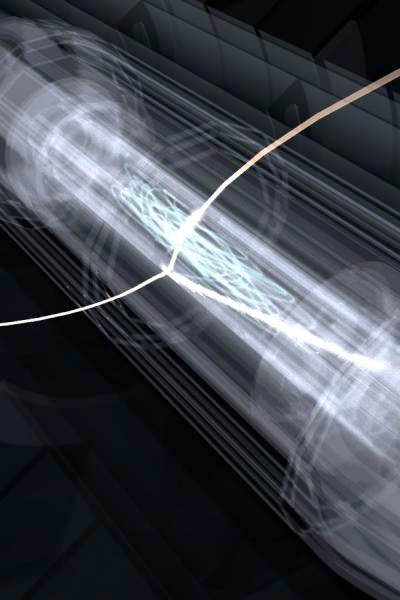Ephemeral Antimatter Trapped for Amazingly Long 16 Minutes

Antimatter, an elusive type of matter that's rare in the universe, has now been trapped for more than 16 minutes — an eternity in particle physics.
In fact, scientists who've been trapping antihydrogen atoms at the European Organization for Nuclear Research (CERN) in Geneva say isolating the exotic particles has become so routine that they expect to soon begin experiments on this rare substance.
Antimatter is like a mirror image of matter. For every matter particle (a hydrogen atom, for example), a matching antimatter particle is thought to exist (in this case, an antihydrogen atom) with the same mass, but the opposite charge.
"We've trapped antihydrogen atoms for as long as 1,000 seconds, which is forever" in the world of high-energy particle physics, said Joel Fajans, a University of California, Berkeley professor of physics who is a faculty scientist at California's Lawrence Berkeley National Laboratory and a member of the ALPHA (Antihydrogen Laser Physics Apparatus) experiment at CERN.
Trapping antimatter is difficult, because when it comes into contact with matter, the two annihilate each other. So a container for antimatter can't be made of regular matter, but is usually formed with magnetic fields.
In the ALPHA project, the researchers captured antihydrogen by mixing antiprotons with positrons — antielectrons — in a vacuum chamber, where they combine into antihydrogen atoms.
The whole process occurred within a magnetic "bottle" that takes advantage of the magnetic properties of the antiatoms to keep them contained. An actual bottle, made of ordinary matter, would not be able to hold antimatter because when the two types of matter meet they annihilate.
Get the world’s most fascinating discoveries delivered straight to your inbox.
After the researchers had trapped antimatter in the magnetic bottle, they could then detect the trapped antiatoms by turning off the magnetic field and allowing the particles to annihiliate with normal matter, which creates a flash of light.
The team has now managed to capture 112 antiatoms in this new trap for times ranging from one-fifth of a second to 1,000 seconds, or 16 minutes and 40 seconds. (To date, since the beginning of the project, Fajans and his colleagues have trapped 309 antihydrogen atoms in various traps.)
And the researchers plan to improve on that, with the "hope that by 2012 we will have a new trap with laser access to allow spectroscopic experiments on the antiatoms," Fajans said in a statement. Those experiments would give researchers more information on the antimatter's properties.
In that way, it could help to answer a question that has long plagued physicists: Why is there only ordinary matter in our universe? Scientists think antimatter and matter should have been produced in equal amounts during the Big Bang that created the universe 13.6 billion years ago. [The Coolest Little Particles in Nature]
Today, however, there is no evidence of antimatter galaxies or clouds, and antimatter is seen rarely and for only short periods, for example, during some types of radioactive decay before it annihilates in a collision with normal matter.
The researchers detail their work on the antimatter trap in a new paper published online June 5 in the journal Nature Physics.
Follow LiveScience for the latest in science news and discoveries on Twitter @livescience and on Facebook.



